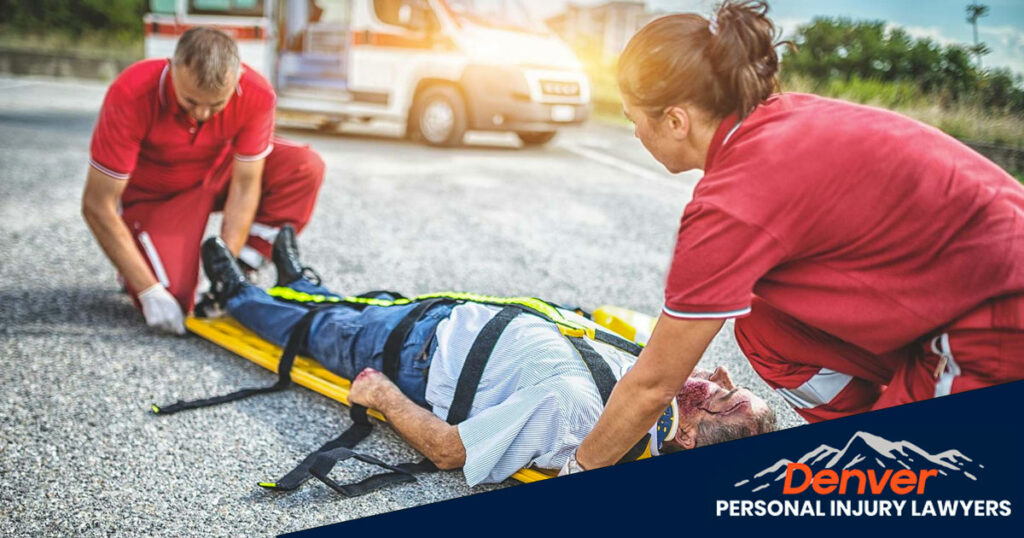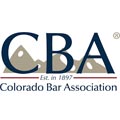Car accidents are among the leading causes of accidental death, injuries, and property damage in the US and Colorado. They can occur in different ways, often involving complex legal disputes between all parties involved.
In addition, car accidents can cause painful injuries that can impact victims for weeks or even years. Specific injuries are widespread in car accidents.
After you sustain injuries in an auto collision, you will need to consult with an experienced Denver car accident lawyer. They can help you build your claim to recover damages. The damages you win compensate you for injuries and can help you get your life back to normal.
Here are some of the most common car accident injuries after a Denver car accident.
Table of Contents
ToggleTraumatic Brain Injuries (TBI)
Every year, about 50,000 people die from TBI. Another 80,000 to 90,000 suffer long-term disabilities from the injury.
Car accidents are one of the leading causes of traumatic brain injury (TBI). TBI is an acquired brain injury and occurs when an object suddenly and violently hits the brain. Often the object pierces the skull and enters brain tissue.
Symptoms of TBI can range from mild, moderate, or severe, depending on the extent of brain damage. For example, a person with a mild TBI can remain conscious or may experience unconsciousness for a few seconds to minutes. Other mild symptoms of TBI include
- Headaches
- Confusion
- Lightheadedness
- Dizziness
- blurred vision
- ringing in the ears
- Fatigue
- Lethargy
- changes in sleep patterns
- behavioral or mood changes
- Trouble with memory and concentration, attention, thinking
Someone with moderate to severe TBI may show the same symptoms but also have more severe symptoms like:
- Persistent headache that worsens over time
- Uncontrollable vomiting or nausea
- Convulsions
- Seizures
- Inability to wake from sleep
- Dilation of pupils
- Slurred speech
- Weakness or numbness in the limbs or extremities
- Lacking coordination
- Confusion
- Restlessness or agitation
Spinal Cord Injuries and Paralysis (Quadriplegia/Tetraplegia and Paraplegia)
A spinal cord injury is a damage to any part of the spinal cord or nerves at the end of the spinal canal. They often cause permanent changes in strength, sensation, and other bodily functions below the injury site.
Moreover, the impact of a crash and torque on the body can do a number on the spinal cord. Serious car accidents often burden victims with long-term disability from spinal cord injuries.
Spinal cord injuries have two broad categories: complete or incomplete. “Complete” is when you lose all sensory and motor functions below the spinal cord. “Incomplete “is when you have some motor or sensory function below the affected area.
Back Injuries
Our bodies are highly vulnerable to high-speed, high-impact motor vehicle crashes. This is because they are not designed to sustain heavy impact. Often such overwhelming force on our bodies leads to back injuries.
Back injuries sometimes have a delayed onset. In addition, the pain can be cumbersome and interfere with your life. Severe back injuries could end in the victim facing chronic pain, disability, or long-term complications. Other back injury symptoms include muscle spasms, burning pain, stiffness, sharp pain, discomfort when walking or standing, and tingling or numbness.
The most common types of back injuries after a motor collision are:
- Fractured lumbar or thoracic vertebrae
- Back sprains and strains
- Herniated discs (when an inner spinal disc slips or ruptures)
- Spondylolisthesis (stress fracture displaces vertebrae)
- Facet joint injuries (damages facet joints affect nerves, which cause pain)
- Discogenic pain (sharp pains or shooting sensations paired with sciatica)
- Degenerative spinal disorders (scoliosis, spinal stenosis, and more)
Burns
Sometimes a vehicle can catch on fire after a crash. The vehicle’s hot fluids, surfaces, steam, or chemicals can encounter your skin.
Skin burns range from first to fourth degree.
First-degree burns only affect the top layer of the skin. Second-degree burns affect the skin, sweat glands, and hair follicles. In addition, the skin may appear red, blistering, and wet. Second-degree burns are more painful and have a higher risk of infection and scarring than first degree.
Third-degree burns are called full thickness burns. They impact all layers of the skin and nerves too. They often result in skin appearing dry, charred, and swollen. Additionally, they can cause substantial scarring and require extensive medical treatment. Sometimes surgery is necessary.
Fourth-degree burns are the most intense level of burn, affecting all levels of the skin and the muscles. Most cases of fourth-degree burns are considered fatal and require emergency medical care.
Internal injuries
Loose objects in the car or any flying debris can hit and injure victims. The trauma of the crash alone can cause blood vessels in the body to rupture. That can lead to blood vessels being unable to clot and self-repair. As a result, internal injuries often require surgery to stop the bleeding and repair the ruptured vessels.
Symptoms of internal bleeding include:
- Stomach pain
- Feeling faint or lightheaded
- Chills
- Fatigue and drowsiness
Fractures and Broken Bones
You can break almost any bone in a car accident; legs, ribs, arms, ankles, and wrists are all susceptible. However, the most common broken bone injuries after car accidents are as follows:
- Vertebral fractures
- Clavicle
- Pelvic bone
- Fibula (lower leg)
- Femur (upper leg)
- Cranial (skull)
- Facial bones (nose, jaws, cheekbones, orbital)
- Sternum (breastbone)
The severity of the broken bone will determine the treatment the victims require. For example, treatment for a simple break might only need a cast and some crutches. However, a more severe break or a compound fracture could require surgery.
Disfiguring Facial Injuries and Scars
Flying broken glass or an impact with the steering wheel can cause facial injuries. The victim might also impact the dashboard, windshield, airbag, side window, car seat, or hard surface.
In the worst cases, facial disfigurement would require surgical procedures and leave the victim with a lasting scar.
Limb Loss and Amputation
Losing a limb such as an arm or a leg is an amputation or traumatic amputation. Sometimes, a victim may need to amputate a digit ( a finger or a toe). While amputation is less common than other car accident injuries, it does happen.
In the case of a traumatic amputation from a car accident, time is of the essence. In addition, the profuse bleeding can lead to shock or infection, both of which can be life-threatening.
Such an injury is considered a disfiguring injury. It can create a life-long disability for the victim.
Neck Injuries and Whiplash
Whiplash is a common neck injury after a car accident. It affects the muscles, ligaments, and tendons of the neck. Whiplash can occur even when vehicles travel at low speeds—the sudden impact and rapid jerking movement force the neck to move like a whip cracking.
While most people recover from whiplash within a few weeks, others may face chronic neck pain and long-term complications.
Some other common neck injuries following a car accident include:
- Cervical Spondylolisthesis
- Slipped or herniated disc in the neck area
- Neck sprain or strain
- Pinched nerve
- Stiff muscles and tendons
- Facet joint injury
- Neck fracture or compression
Knee Injuries
The knees can easily collide with the vehicle due to the crash impact. Knee injuries from car accidents can range from bruises to fractures.
The cartilage in the knee can tear if the knee twists or makes some other abrupt movement in the crash. The most common types of knee injuries from auto collisions are:
- Anterior cruciate ligament (ACL) injuries
- Posterior cruciate ligament (PCL) injuries
- Medial collateral ligament (MCL) injury
- Meniscus injury
Foot and Ankle Injuries
Toe and foot fractures, ankle strains, and sprains are common in car accidents. In addition, collisions can sometimes sever feet and toes in a crash.
These can often be the most frustrating injuries, limiting the victims’ ability to walk. Foot and ankle injuries can take weeks or months to heal. You might need a cast, a special shoe or boot, or even surgery to correct your balance or walking.
Shoulder Injuries
Most drivers brace the steering wheel during a collision as an automatic response to the crash. The force causes the shoulders to lock in place and absorb shock. The result could be a torn rotator cuff. Or, maybe the power of the crash threw your shoulder against the steering wheel. That would result in soft tissue injury surrounding the shoulder. Symptoms of a shoulder injury after a car accident include:
- Shooting pain in the shoulder, neck, or arm
- Tingling or Numbness
- Burning sensations
- Loss or reduced range motion
Wrist and Hand Injuries
Broken wrists are very common in car accidents. While you brace the steering wheel, the joint in your wrist locks. Then the impact of the airbag or other flying object can cause a wrist fracture. Distal radius fractures (broken wrists) may require surgery, depending on the severity. Other hand injuries that frequently occur in car accidents are:
- Broken fingers
- Dislocated finger or thumb
- Degloving hand injury (when the skin is scraped or torn off of the hands, exposing the inner muscles and bones)
- Crushed hands or fingers
- Hand Ligament and tendon injuries
Lacerations, Bruises, and “Road Rash”
Road rash is a friction wound. If the impact of a collision ejects the driver or passengers out of the vehicle, the abrasive skidding on rough or tarred surfaces can cause road rash. In addition, their skin can get rubbed off, requiring burn treatment.
Furthermore, broken glass or torn sheet metal can induce cuts or deep lacerations.
Any body part that impacts the car or other object can result in bruises.
Crush Injuries
Any body part caught between two objects with heavy pressure can lead to a crush injury.
Crush injuries can range from minor bruising and lacerations to internal organ damage and broken bones. When excessive pressure is placed on an extremity or your entire body, that can lead to severe and sometimes permanent trauma.
A minor crush injury could be a finger smashed in a door. A more severe crush injury, like your leg stuck under a vehicle, can be excruciatingly painful. In addition, crush injuries can be deceptively serious. While they can initially appear non-life threatening, specific crush injuries can lead to kidney failure or even death days later.
Soft Tissue Injuries
Soft tissue injuries include sprain, strains, bruising, and damage to muscles, tendons, and ligaments. While these are the most prevalent injuries in car accidents, they are also unassumingly dangerous. The reason is that they do not always get proper care and treatment.
Victims often believe their injuries are less serious than they actually are. For example, if a car accident injury victim thinks they sprained their ankle, they might buy a compression wrap at the pharmacy. But, it could be something more serious than a sprained ankle. What if they had a bone fracture?
Selecting the appropriate treatment plan is impossible without proper medical attention and diagnosis. That’s why it’s imperative to seek medical attention immediately after a car accident.
Post-Traumatic Stress Disorder
Accident injuries go beyond the physical. For example, many victims suffer mental and emotional anguish after a car accident. In addition, they may suffer from post-traumatic stress from the accident.
Victims may also lose enjoyment in their life due to the restrainments of their injury and the excessive medical bills they have to face. Activities that used to be routine might now be formidable tasks due to your injuries.
In addition to medical expenses, injury victims have a right to recover for their pain and suffering.
Contact a Denver car accident lawyer today to discuss what your car accident claim might be worth.
Tips to Avoid Car Accident Injuries
By driving responsibility and keeping their vehicles well-maintained, drivers can limit their risk of causing accidents. Never drive under the influence of drugs or alcohol and try to limit distractions as much as possible.
However, despite even the most cautious driver’s effort to reduce the risk of accidents, they will still happen. When car accidents happen, our experienced Denver car accident lawyers are here to advocate on behalf of injured victims. If another party’s negligence caused the accident, which led to your injuries, you need solid legal representation. We can help you get the full and fair compensation you deserve.
Legal Help for Denver Car Accident Injury Victims
If you suffered any injuries in an accident caused by someone else’s negligence, we might be able to help you.
Our knowledgeable and experienced Denver car accident attorneys can help conduct a thorough investigation and evaluate the facts of your car. We will help you gather all necessary evidence to establish the other driver’s negligence. In addition, having plenty of evidence will support your claim that the other party caused the accident and consequently caused your accidents.
Furthermore, we work with medical and financial experts to determine the extent of your injuries. That way, we can better understand the total current and future costs you can recover.
Our client’s needs always come first, and our goal is to obtain fair compensation for your damages. However, if necessary, we are prepared to litigate in court on your behalf.
Contact a Denver Personal Injury Attorney for a Free Consultation
Consult with an attorney as soon as possible to ensure you are within the Colorado statute of limits for car accident claims.
Contact us today for a free initial consultation or call 720-500-HURT.
















